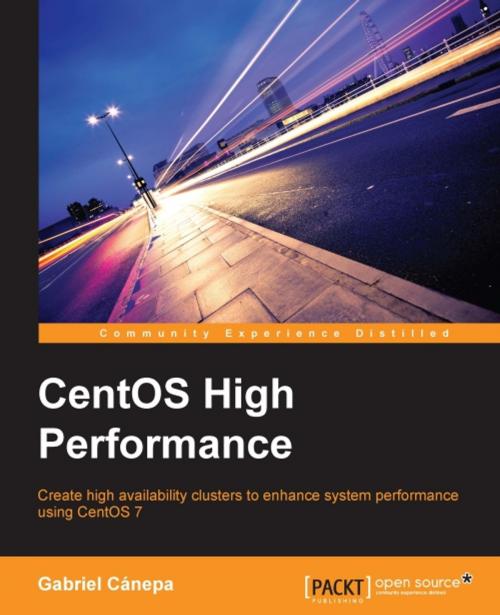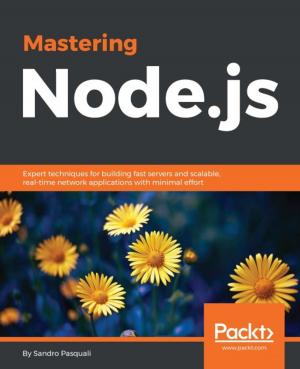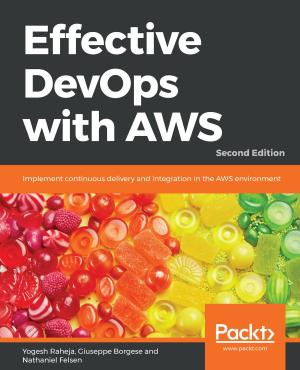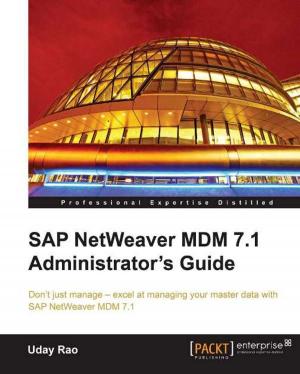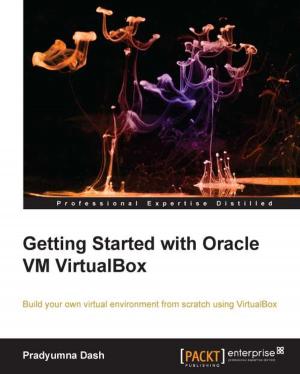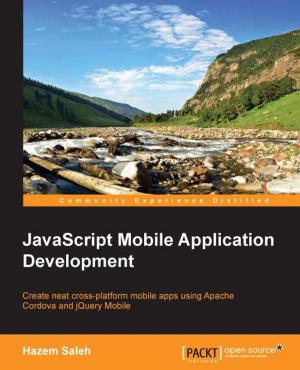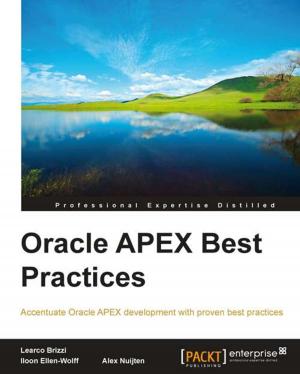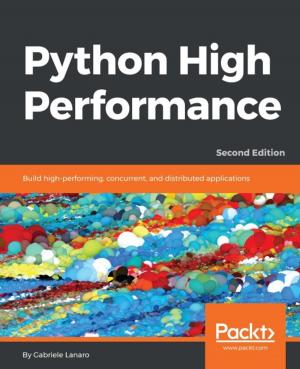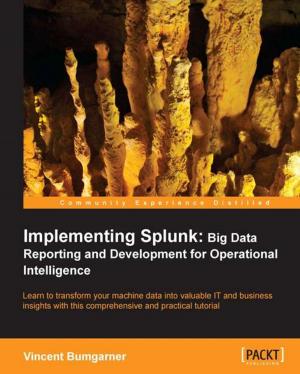CentOS High Performance
Nonfiction, Computers, Operating Systems, Unix, Linux, Networking & Communications| Author: | Gabriel Canepa | ISBN: | 9781785284342 |
| Publisher: | Packt Publishing | Publication: | January 30, 2016 |
| Imprint: | Packt Publishing | Language: | English |
| Author: | Gabriel Canepa |
| ISBN: | 9781785284342 |
| Publisher: | Packt Publishing |
| Publication: | January 30, 2016 |
| Imprint: | Packt Publishing |
| Language: | English |
Create high availability clusters to enhance system performance using CentOS 7
About This Book
- Master the concepts of high performance and high availability to eliminate performance bottlenecks
- Maximize the uptime of services running in a CentOS 7 cluster
- A step-by-step guide that will provide knowledge of methods and approaches to optimize the performance of CentOS clusters
Who This Book Is For
This book is targeted at system administrators: those who want a detailed, step-by-step guide to learn how to set up a high-availability CentOS 7 cluster, and those who are looking for a reference book to help them learn or refresh the necessary skills to ensure their systems and respective resources are utilized optimally. No previous knowledge of high-availability systems is needed, though the reader is expected to have at least some degree of familiarity with any spin-off of the Fedora family of Linux distributions, preferably CentOS.
What You Will Learn
- Install a CentOS 7 cluster and network infrastructure
- Configure firewall, networking, and clustering services and settings
- Set up and test a HAC (high-availability cluster) to host an Apache web server and a MariaDB database server
- Monitor performance and availability
- Identify bottlenecks and troubleshoot issues
- Improve performance and ensure high availability
In Detail
CentOS is the enterprise level Linux OS, which is 100% binary compatible to Red Hat Enterprise Linux (RHEL). It acts as a free alternative to RedHat's commercial Linux offering, with only a change in the branding. A high performance cluster consists in a group of computers that work together as one set parallel, hence minimizing or eliminating the downtime of critical services and enhancing the performance of the application.
Starting with the basic principles of clustering, you will learn the necessary steps to install a cluster with two CentOS 7 servers. We will then set up and configure the basic required network infrastructure and clustering services. Further, you will learn how to take a proactive approach to the split-brain issue by configuring the failover and fencing of the cluster as a whole and the quorum of each node individually. Further, we will be setting up HAC and HPC clusters as a web server and a database server. You will also master the art of monitoring performance and availability, identifying bottlenecks, and exploring troubleshooting techniques.
At the end of the book, you'll review performance-tuning techniques for the recently installed cluster, test performance using a payload simulation, and learn the necessary skills to ensure that the systems, and the corresponding resources and services, are being utilized to their best capacity.
Style and approach
An easy-to-follow and step-by-step guide with hands-on instructions to set up real-world simple cluster scenarios that will start you on the path to building more complex applications on your own.
Create high availability clusters to enhance system performance using CentOS 7
About This Book
- Master the concepts of high performance and high availability to eliminate performance bottlenecks
- Maximize the uptime of services running in a CentOS 7 cluster
- A step-by-step guide that will provide knowledge of methods and approaches to optimize the performance of CentOS clusters
Who This Book Is For
This book is targeted at system administrators: those who want a detailed, step-by-step guide to learn how to set up a high-availability CentOS 7 cluster, and those who are looking for a reference book to help them learn or refresh the necessary skills to ensure their systems and respective resources are utilized optimally. No previous knowledge of high-availability systems is needed, though the reader is expected to have at least some degree of familiarity with any spin-off of the Fedora family of Linux distributions, preferably CentOS.
What You Will Learn
- Install a CentOS 7 cluster and network infrastructure
- Configure firewall, networking, and clustering services and settings
- Set up and test a HAC (high-availability cluster) to host an Apache web server and a MariaDB database server
- Monitor performance and availability
- Identify bottlenecks and troubleshoot issues
- Improve performance and ensure high availability
In Detail
CentOS is the enterprise level Linux OS, which is 100% binary compatible to Red Hat Enterprise Linux (RHEL). It acts as a free alternative to RedHat's commercial Linux offering, with only a change in the branding. A high performance cluster consists in a group of computers that work together as one set parallel, hence minimizing or eliminating the downtime of critical services and enhancing the performance of the application.
Starting with the basic principles of clustering, you will learn the necessary steps to install a cluster with two CentOS 7 servers. We will then set up and configure the basic required network infrastructure and clustering services. Further, you will learn how to take a proactive approach to the split-brain issue by configuring the failover and fencing of the cluster as a whole and the quorum of each node individually. Further, we will be setting up HAC and HPC clusters as a web server and a database server. You will also master the art of monitoring performance and availability, identifying bottlenecks, and exploring troubleshooting techniques.
At the end of the book, you'll review performance-tuning techniques for the recently installed cluster, test performance using a payload simulation, and learn the necessary skills to ensure that the systems, and the corresponding resources and services, are being utilized to their best capacity.
Style and approach
An easy-to-follow and step-by-step guide with hands-on instructions to set up real-world simple cluster scenarios that will start you on the path to building more complex applications on your own.
